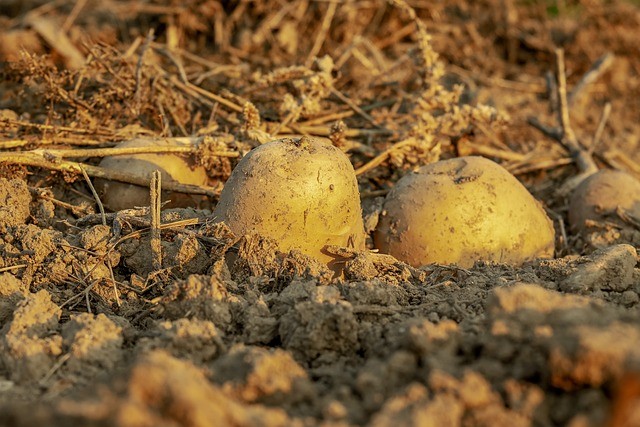The journey of potatoes from farm to fork involves several stages of cultivation, processing, distribution, and preparation. Potatoes are one of the world’s most widely consumed and versatile foods, making their journey from the farm to your plate a fascinating process. Here’s an overview of the various stages in the journey of potatoes:
1. Cultivation:
- Planting: Potatoes are typically grown from seed potatoes, which are small pieces of mature potatoes that have sprouts. These are planted in prepared fields during the appropriate planting season.
- Growth: The potatoes grow underground on stems called stolons, developing from the eyes of the seed potatoes. The plants require well-draining soil, proper irrigation, and protection from pests and diseases.
- Hilling: As the plants grow, they are “hilled,” which means piling soil around the base of the plants to protect developing potatoes from sunlight and to encourage more tuber growth.
2. Harvesting:
- Maturity: Potatoes are typically ready for harvest when the foliage above ground starts to die back and turn yellow or brown. This signals that the potatoes have reached their full size.
- Mechanical Harvesting: Large-scale potato farms often use specialized machinery to harvest potatoes. These machines dig up the potatoes from the soil, separate them from the plant material, and convey them to a collection bin.

3. Sorting and Grading:
- After harvest, the potatoes go through sorting and grading processes to remove damaged or undersized potatoes. This ensures that only high-quality potatoes move further in the supply chain.
4. Storage:
- Potatoes are stored in controlled environments with proper humidity and temperature to prevent sprouting and spoilage. Different potato varieties have varying storage requirements.
5. Processing:
- Fresh Consumption: Many potatoes are sold fresh and are used for various culinary applications, such as boiling, roasting, frying, and mashing.
- Processing into Products: Some potatoes are processed into products like potato chips, french fries, and dehydrated potato flakes. These products undergo cutting, blanching, frying, and seasoning before packaging.
6. Distribution:
- Potatoes are transported from farms and processing facilities to distribution centers, grocery stores, markets, and restaurants. The transportation process may involve refrigerated trucks to maintain freshness.
7. Consumption and Preparation:
- Once purchased, potatoes are prepared according to consumers’ preferences. They can be boiled, baked, mashed, fried, or used in various dishes like stews, casseroles, and salads.
8. Waste and Sustainability:
- The potato industry also deals with waste management, including the disposal of discarded or spoiled potatoes. Efforts are being made to reduce food waste and promote sustainable practices in potato farming and processing.
From being planted in fields to becoming a staple on dining tables, the journey of potatoes involves a series of carefully managed steps to ensure quality, freshness, and taste. The versatility of potatoes and the numerous culinary possibilities they offer make them an essential and beloved ingredient in many cuisines around the world.











